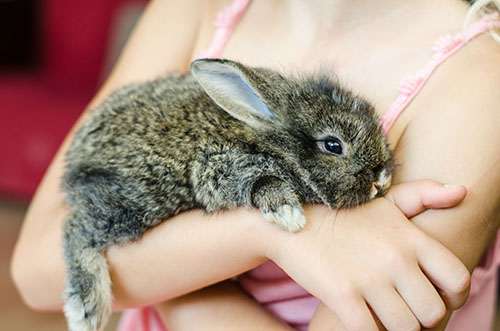Importance of proper rabbit diet
Jun 05, 2023

The basis for the best ration for rabbits consists of high-quality pellets, clean water, and limited fresh vegetables.
Pellets should be fortified with digestible fiber and balanced specifically for leporids (rabbits) as opposed to straight alfalfa pellets. All ingredients should be of high quality to ensure proper digestibility for nutrient availability. If pellets contain ample soluble fiber, feeding hay is not necessary; however, offering high quality, leafy hay with finer stems can be a good supplement.
Offering vegetables as a treat is a good addition to proper rabbit rations. Remember, the animal can be picky if these vegetables are not fresh. The following are acceptable to feed: alfalfa, clover, broccoli, collard greens, carrots/carrot tops, dandelion greens, kale, mustard greens, parsley, and spinach. All these vegetables have a considerably high Vitamin A content. Remember, though, that they should be considered treats to be offered periodically rather than as the main focus of the diet.
Stages of development –
Looking for more advice on rabbit nutrition? Stop by your local Co-op for additional guidance!
For more content like this, check out the latest issue of The Cooperator.
Pellets should be fortified with digestible fiber and balanced specifically for leporids (rabbits) as opposed to straight alfalfa pellets. All ingredients should be of high quality to ensure proper digestibility for nutrient availability. If pellets contain ample soluble fiber, feeding hay is not necessary; however, offering high quality, leafy hay with finer stems can be a good supplement.
Offering vegetables as a treat is a good addition to proper rabbit rations. Remember, the animal can be picky if these vegetables are not fresh. The following are acceptable to feed: alfalfa, clover, broccoli, collard greens, carrots/carrot tops, dandelion greens, kale, mustard greens, parsley, and spinach. All these vegetables have a considerably high Vitamin A content. Remember, though, that they should be considered treats to be offered periodically rather than as the main focus of the diet.
Stages of development –
- Resting does and bucks – offer high-quality pellets at the rate of 1.25 oz. per lb. of body-weight (approx. 4 oz.)
- Lactating does – offer high-quality pellets at the rate of 1.5 oz. per lb. of bodyweight (approx. 7-8 oz.)
- Doe and litter (to 3 weeks of age) – offer high-quality pellets on a free-choice basis. It is possible females and babies (kits) could consume up to 1.0 lb. depending on the number.
- Doe and littler (3 weeks to weaning) – offer high-quality pellets on a free-choice basis. It is possible females and kits could consume up to 2.0 lbs. depending on the number.
- Growing rabbits (4-7 lbs.) – offer high-quality pellets at the rate of 1.25 oz. per lb. of bodyweight (approx. 5-8 oz.)
Looking for more advice on rabbit nutrition? Stop by your local Co-op for additional guidance!
For more content like this, check out the latest issue of The Cooperator.